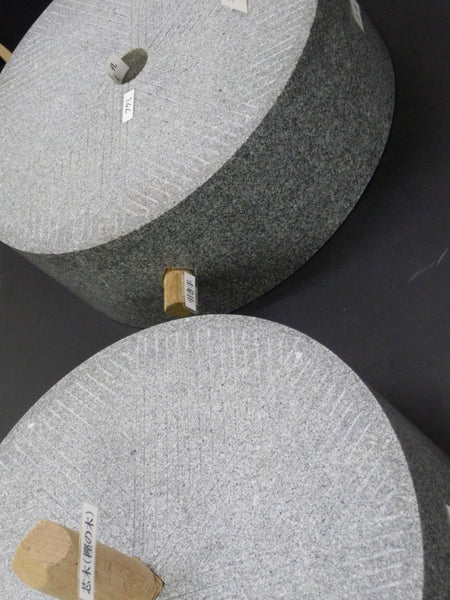I had a strange road to Japanese tea appreciation. When I first started working in coffee and tea, the place where I worked had a very specific lens to evaluate teas, and it was a one-size-fits-all approach that went something like this: boil water, pour it over the leaves, steep for 5 minutes, strain, taste. If you’ve ever tried to brew Sencha that way, I wouldn’t blame you if you never tried it again. If you haven’t, imagine over-boiled asparagus and bitter grass water to get an idea of what you missed.
Needless to say my first impression wasn’t positive, and it took me a while to develop an appreciation for Japanese green tea. It ultimately took listening to others and changing my brewing approach to unlock the flavor potential. Turns out that restraint was the missing key. Cooler water (165-176F) and shorter steeps (1-2 minutes) yielded much tastier results.
I’ve now had 30+ years to hone in on what I love about Japanese green teas, and like a crisp and delicious sauté made from the day’s farmers market haul, it’s about starting with the right ingredients, picked at peak, and not messing them up. Green tea from the right place, picked at the right time, processed skillfully, and brewed intentionally, gives a flavor snapshot of the time and place those leaves grew. When it’s well executed it’s a singular and delicious experience!
Dry vs. wet green
All green teas are green because the leaves are heated soon after picking to prevent them from oxidizing and turning into another type of tea (oolong, black…). Many green teas are heated with dry heat, traditionally in a pan or basket over a high heat source. Japanese green teas are heated with steam. Steam gives them their characteristic deep green color and produces a fresh, grassy flavor. After steaming, the leaves are kneaded and rolled, which breaks them up into smaller pieces, making the flavor and antioxidant properties more easily (and quickly) extractable. It’s also what gives them their characteristic heavy mouthfeel.
Where and when is ours produced?
Gone Green Sencha is an organic tea grown in Tagouchi, Shizuoka Prefecture, in an isolated area surrounded by woods. The farmers there have been honing traditional farming methods and practicing organic agriculture for a long time, and are able to get umami and full flavor I’m not used to finding in certified organic teas.

This lot is an example of the increasingly more difficult to find asamushi (lightly steamed) style, where many are now fukamsuhi (heavily steamed). In the cup, it translates as a lighter, slightly sweet flavor, as opposed to a more brothy, savory experience of the heavily steamed style.
It’s a 1st Flush tea, meaning it’s plucked after the first flush of leaf growth in May as the plants are just coming out of the winter dormant period. This is when the flavors are at their freshest and most vibrant. After the leaves are rolled and dried, they’re stored cold and airtight to preserve their freshness. Keeping the tea airtight and cool helps to keep the flavors present and fresh. While fresher is always better in green tea, Sencha that is skillfully produced and stored properly is good for about a year.
Whenever I open the seal on a bag of Sencha, I’m momentarily transported to the garden where it was produced. In that moment you might say Everything’s Gone Green. Once the seal is broken, the tea will start to age faster, so keep it cool and sealed to minimize oxidation and age.
We’re stocking 2023 crop and it’s tasting delicious. In fact, this same tea was served during a social dinner at the G7 Summit this May in Hiroshima, Japan: a major honor.
Genmaicha Green, the classic mixture of green tea and toasted rice, is made from Bancha, which is produced a little later in season. It’s picked after Sencha production in late May or June, and the larger leaves are visibly different from Sencha. After drying it’s mixed with toasted rice, which yields a mellow and naturally low caffeine beverage. We typically start offering new crop Genmaicha Green to our customers in September, and we’re shipping it now. I love the mellow and comforting toastiness of this tea.
Matcha
We’ve been serving matcha and matcha lattes in our cafes for a handful of years now, and for the last couple featuring a traditional stone ground matcha we sourced from a longtime tea partner. The tea is called Matcha Kansai, named for the area of Japan where it's produced.
It starts with shade-grown Tencha, and is stoneground in the traditional method. This tea is incredibly fine, at 3-7 microns. Unlike leaf teas that we steep and strain, matcha is whisked into the water and consumed without straining. The tiny particle size makes a smooth, silky texture and mouthfeel, which is an important attribute of traditional matcha.
With a focus on quality over quantity, the entire Kansai facility can only produce 125 lbs of matcha in a day. It's not like they couldn't make more with more modern equipment or faster stone rotation, but they want to keep the tea from getting hot. Keeping the stones cool prevents degradation of flavor and aroma and keeps the vibrant, fresh green character front and center. It's immediately apparent in the cup.

We get compliments and requests for this tea regularly, so we just started offering Matcha Kansai for you to make at home. Check out our new Matcha Kansai tea here!
One of the things that keeps tea fresh and interesting for me is the incredible diversity of flavors available, each reflecting the culture and season where it originated. If you’re already a fan or if you’ve never tried them before, now’s the time to dive in and check out the world of Japanese green tea
Cheers,
-Rich













